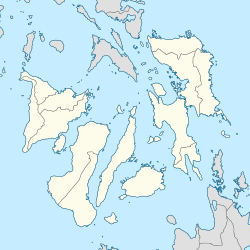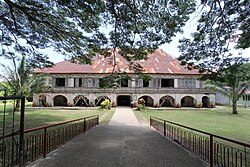| Lazi Church | |
|---|---|
| San Isidro Labrador Parish Church | |
 Lazi Church in August 2025 | |
Location in the Visayas | |
| 9°07′40″N123°38′02″E / 9.127913°N 123.633854°E | |
| Location | Lazi, Siquijor |
| Country | Philippines |
| Denomination | Roman Catholic |
| History | |
| Status | Parish church |
| Founded | 1857 |
| Dedication | Saint Isidore the Laborer |
| Architecture | |
| Functional status | Active |
| Heritage designation | National Cultural Treasure |
| Architectural type | Church building |
| Style | Neoclassical |
| Completed | 1884 |
| Administration | |
| Metropolis | Dumaguete |
| Diocese | Diocese of Dumaguete |
| Clergy | |
| Bishop(s) | Most Rev. Julito B. Cortes, D.D. |
San Isidro Labrador Parish Church, commonly known as Lazi Church, is a Roman Catholic church in the municipality of Lazi, Siquijor, Philippines within the jurisdiction of the Diocese of Dumaguete. It became an independent parish in 1857 under the advocacy of Saint Isidore the Laborer.
Contents
The church, also known for its huge convent, was declared a National Cultural Treasure by the National Museum of the Philippines. It is also nominated for the UNESCO World Heritage Tentative List since 2006 under the collective group of Baroque Churches of the Philippines (Extension) together with the churches of Boljoon, Guiuan, Loboc and Tumauini. In 2014, the government announced its plan to nominate Lazi Church in the World Heritage List. It conducted a dossier training for Lazi representatives; once the dossiers are completed, the long process of nomination will commence in Paris.








